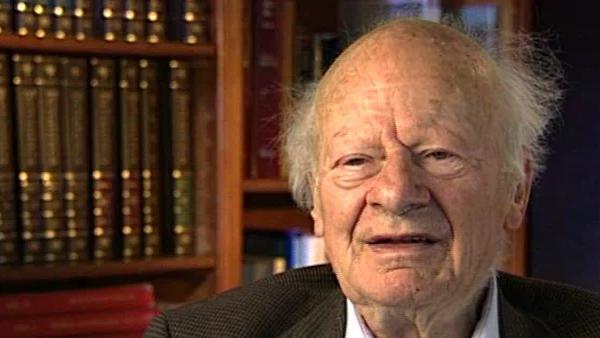NEXT STORY

The size of a star in stellar evolution theory
RELATED STORIES

NEXT STORY

The size of a star in stellar evolution theory
RELATED STORIES


|
Views | Duration | |
|---|---|---|---|
| 121. The Alpher-Bethe-Gamow paper | 1 | 843 | 01:39 |
| 122. Studying nuclear matter with Jeffrey Goldstone | 433 | 04:24 | |
| 123. Research on the binding of nuclear matter | 284 | 03:16 | |
| 124. Experimental research on the binding of nuclear matter | 276 | 03:10 | |
| 125. Binding of nuclear matter: simultaneous exchange of two pions | 267 | 01:38 | |
| 126. Thomas Gold's explanation of pulsars | 388 | 01:47 | |
| 127. Studying neutron stars | 320 | 03:26 | |
| 128. Joseph Taylor's work on binary neutron stars | 362 | 02:57 | |
| 129. My Nobel Prize lecture on energy production in stars | 532 | 03:41 | |
| 130. The size of a star in stellar evolution theory | 325 | 03:19 |


In 1967 the Nobel committee awarded me the Nobel Prize, so we... my wife and I traveled to Stockholm and so did our two children, then grown up. It was a beautiful feast and for the purpose I had to give a lecture on the main subject of the prize, namely the theory of the energy in stars. Fortunately I had available the work by Icko Iben on stars of mass about three times the mass of the sun, going to the end of the supply of hydrogen, then the center contracting and the outside expanding into a Red Giant. So in this Nobel lecture I reported essentially this further work in... in the evolution of stars. The evolution of stars has become a subject of great interest to astrophysicists generally and... and you go through all the stages; the formation of a red giant and then in the center of it, you make... Salpeter's process making carbon 12 and then it contracts some more, temperature gets higher, it gets to a billion degrees. And then to... carbon nuclei can react and make neon and magnesium and then finally to... oxygen nuclei can interact and make silicon, and finally silicon will capture the helium nuclei which are now present in abundance because it is now sufficiently hot to release helium nuclei from other ambient nuclei and silicon then captures one by one alpha particles, helium nuclei, finally ending up in Nickel 56, which is the biggest nucleus which is completely composed of alpha particles. So that is then the end of the story, nickel 56, after a few weeks transforms into Iron 56, which happens to be a particularly abundant isotope and element in all the world. And this is... what I have just given you is an explanation how this comes about and how elements are actually formed, not by the Alpher-Bethe-Gamow process.
The late German-American physicist Hans Bethe once described himself as the H-bomb's midwife. He left Nazi Germany in 1933, after which he helped develop the first atomic bomb, won the Nobel Prize in Physics in 1967 for his contribution to the theory of nuclear reactions, advocated tighter controls over nuclear weapons and campaigned vigorously for the peaceful use of nuclear energy.
Title: My Nobel Prize lecture on energy production in stars
Listeners: Sam Schweber
Silvan Sam Schweber is the Koret Professor of the History of Ideas and Professor of Physics at Brandeis University, and a Faculty Associate in the Department of the History of Science at Harvard University. He is the author of a history of the development of quantum electro mechanics, "QED and the men who made it", and has recently completed a biography of Hans Bethe and the history of nuclear weapons development, "In the Shadow of the Bomb: Oppenheimer, Bethe, and the Moral Responsibility of the Scientist" (Princeton University Press, 2000).
Tags: Nobel Prize, Stockholm, Icko Iben
Duration: 3 minutes, 42 seconds
Date story recorded: December 1996
Date story went live: 24 January 2008